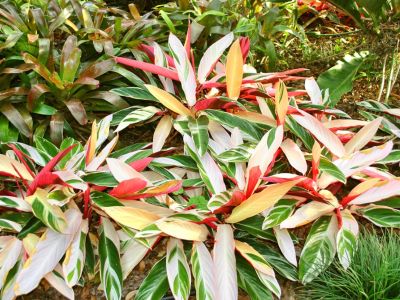Foliage of stromanthe houseplants is a reddish maroon and pink on the backside of the leaves, peeking through the green and white variegated tops. With the right stromanthe plant care, the ‘Triostar’ can reach 2 to 3 feet (up to 1 m.) in height and 1 to 2 feet (31-61 cm.) across.
Growing Stromanthe Sanguine
Learning how to grow a stromanthe is not complicated, but you must commit to providing regular humidity when growing the Stromanthe ‘Triostar’ plant. A native of the Brazilian rain forest, the plant cannot exist in a dry environment. Misting helps provide humidity, as does a pebble tray under or near the plant. A room humidifier close by is a great asset when growing Stromanthe sanguine. Watering correctly is important when learning how to grow a stromanthe. Keep the soil moist but allow the top inch (2.5 cm.) to dry out before watering again. Pot this plant in a well-draining houseplant soil or mix. Feed stromanthe with a balanced houseplant fertilizer during the growing season. Stromanthe houseplants are sometimes called ‘Tricolor,’ especially by local growers. Stromanthe plant care includes providing just the right amount of limited sunlight or stromanthe houseplants can become a freckled, burned mess. Give stromanthe houseplants bright light, but no direct sun. If you see burn spots on the leaves, reduce sun exposure. Keep the plant in an eastern or northern exposure.
Stromanthe Plant Care Outside
You may be wondering, “Can Stromanthe ‘Triostar’ grow outside?” It can, in the warmest areas, Zone 9 and higher. Gardeners in more northern areas sometimes grow the plant outside as an annual. When growing the Stromanthe ‘Triostar’ plant outside, place it in a shaded area with morning sun or in a total shaded area if possible. The plant can take more sun in cooler areas. Now that you’ve learned how to grow a stromanthe, give it a try, indoors or out.
